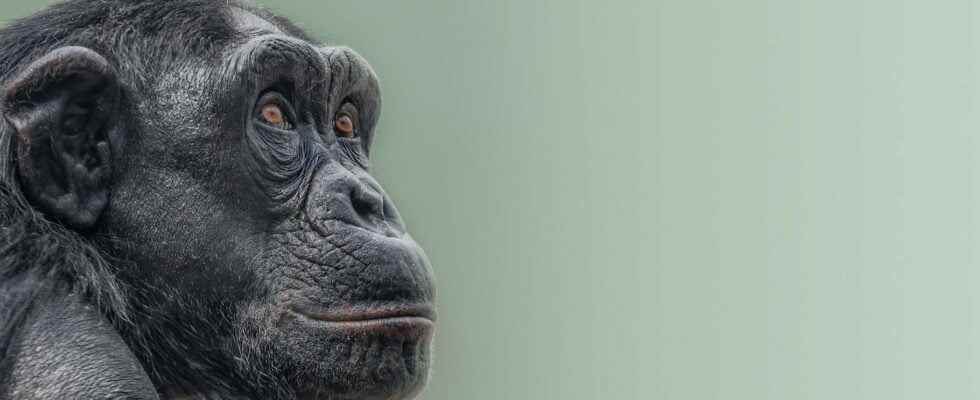“Beasts of science” is like a collection of stories. Beautiful stories that tell the living in all its freshness. But also in all its complexity. A parenthesis to marvel at the treasures of the world. For this new episode, let’s visit our closest cousin: the chimpanzee.
You will also be interested
[EN VIDÉO] A chimpanzee rears up to bear fruit To be able to bear more fruit, a chimpanzee adopts bipedalism. Is this the origin of this mode of travel?
Chimpanzees. Our closest cousins since they share with us some 98% of their Genoa. Literally from “false men”. But the fact remains that when Jane Goodall caught them for the very first time using tools — let’s not get excited though, these were twigs they were using to flush out termites — it’s a whole world of beliefs that collapsed. Science in the early 1960s still thought, in fact, that only humans were capable of such intellectual prowess.
Since then, several animals have been recognized as capable of using or even making tools. A lot of great apes, the elephant, the crow or even the octopus. And it is therefore not for this aptitude, which remains singular all the same, that we are interested today in the chimpanzee. No. What brings it back to center stage this time around is an even more surprising behavior that was first observed in November 2019.
The story takes place in Loango National Park (Gabon). While a team of researchers has been observing for several years now, the behavior of a group of wild chimpanzees. And it is to Alessandra, a “simple” volunteer, that Suzee, a female from the group, will finally do the honor of revealing herself. After inspecting a wound on the foot of Sia, her teenage son, she seems to think a little. Then, she catches an insect in full flight – it will have taken Alessandra the support of the video filmed at the time to see it –, puts it in the mouth and spits it out to apply it to the wound.
An extremely rare prosocial behavior
Of course, this isn’t the first time an animal has been caught self-medicating. Humans have been doing this for at least 1,400 years before our era. Bears do. Elephants, starlings and even bees too. But, in general, by swallowing plants or other substances intended to calm intestinal upset. Chimpanzees — like bonobos –, for example, are known to chew or swallow leaves with antiparasitic properties.
But applying a bug — potentially with properties anti-inflammatories, antiseptics or soothing that could relieve the pain — on a wound… and what is more, on the wound of another than oneself, it is not common in the animal world. Clearly prosocial behavior, as the researchers say. Understand, behavior that is in the interest of others rather than oneself. An extremely rare behavior in non-human animals.
In fifteen months of more careful observations, the researchers were finally able to document this behavior again on some 76 occasions. In females as well as in males. With respect to related or unrelated chimpanzees. The proof that it was in no way an isolated phenomenon.
What are these insects that chimpanzees apply to their wounds? What benefits do they derive from it? How is this behavior transmitted from one individual to another? From one generation to another? These are all questions to which researchers will now strive to find answers. But one thing seems certain: our closest cousin is definitely not that stupid!
Interested in what you just read?
